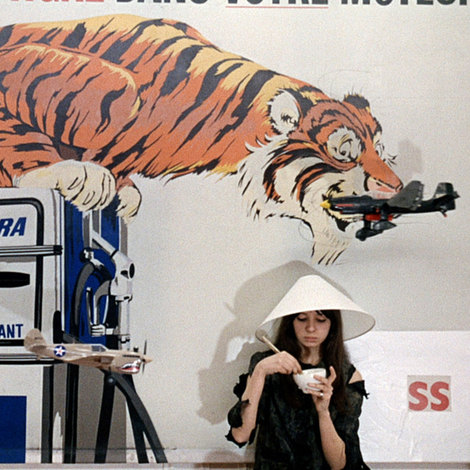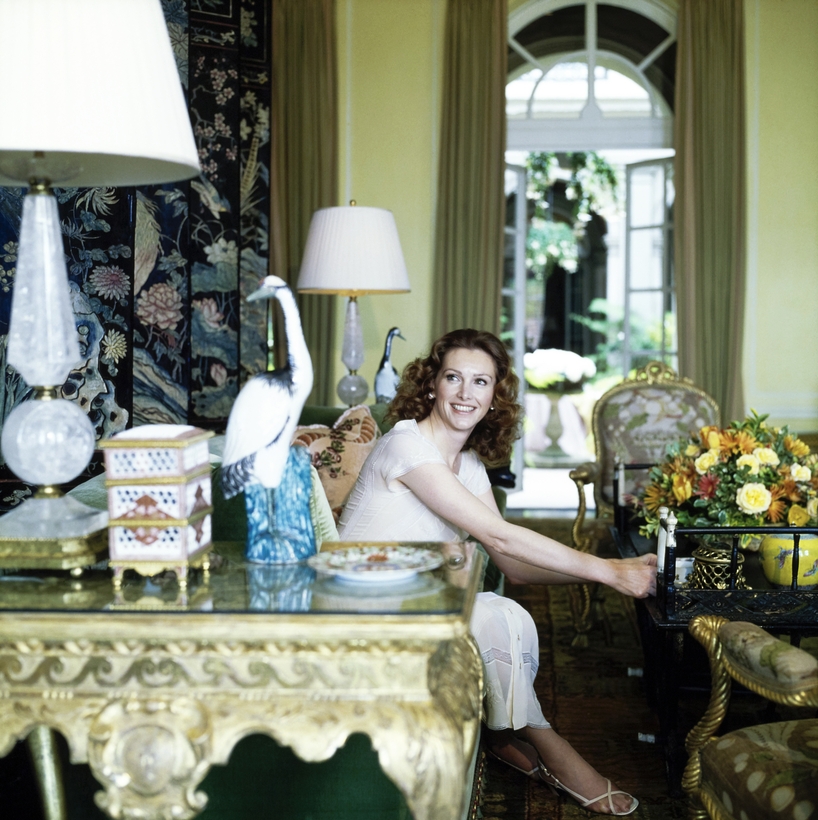Ann Getty blossomed from teenage tomboy driving a tractor on her parents’ peach farm in California to the elegant wife of the composer Gordon Getty, who also happened to be the fourth child of the world’s richest man, the oil baron J Paul Getty.
Beautiful, effervescent and smart, Getty was the perfect hostess of their lavish parties in San Francisco attended by the glitterati of the classical music world, such as Luciano Pavarotti, Jessye Norman and Plácido Domingo.
The couple would travel the world to music and arts festivals in their opulently furnished Boeing 747, nicknamed Jetty. At one of these sojourns in Salzburg in 1977 Getty met the British-Austrian publisher George Weidenfeld. They became good friends and in 1984 Ann Getty effectively saved Weidenfeld & Nicolson, which had reported losses of $333,628, by buying a 23.7 percent stake in the company. The next year she and Weidenfeld teamed up to buy the New York publishing house Grove Press, which had introduced avant-garde European literature to America and unleashed surreal and risqué fiction written by authors such as William Burroughs.
For nearly 40 years, Grove had flourished as a bohemian outpost of the US book world, circumventing the country’s obscenity laws to publish Lady Chatterley’s Lover, and the equally racy Tropic of Cancer by Henry Miller, while outraging anti-communist sensibilities by publishing the plays of Bertolt Brecht. The civil rights movement, the sexual revolution and the Sixties counterculture were anatomized by Grove. It became the epitome of cool for a generation of west coast undergraduates, of which Getty had been one.
Now it had fallen on hard times. The premise of the rescue deal was simple. Getty’s petrodollars would buy Grove for $2 million and clear its debts while Weidenfeld would apply his expertise to revive what the latter called “a very literary house”. With her four children nearly grown up and her husband flush with cash from his share of Getty Oil’s sale to Texaco for $10 billion in 1984, she was ripe for a new adventure.

It proved to be so, but perhaps not in the way she envisaged. She was determined to do more than sign the checks. She bought a “pied-à-terre” on Fifth Avenue and worked at Grove furnished with a Victorian partners desk and Biedermeier bookcase. “I’m a publisher because it’s a cover for my indulgence,” she told The New York Times in 1989. “I love to read all day. But I come from a nice Puritan stock, and I grew up believing that you have to work all day, so I made reading my work.”
New York high society took immediate notice of her and wooed her to the boards of the Metropolitan Museum of Art, the New York Public Library and New York University. Still her checkbook continued to play a leading part in the publishing venture. Keen to expand the roster of authors, Grove paid liberal advances, reportedly offering Milan Kundera $1 million for his latest novel. Meanwhile, the decision to depose Grove’s president and chief executive, Barney Rosset, after initially retaining him, ended in legal action and a settlement out of court. The balance sheet sagged further after Weidenfeld submitted his personal entertaining expenses. These were said to have included a two-week Nile cruise on which he introduced the anglophile Getty to 80 British “intellectuals”. By 1989 losses were estimated at $15 million. Grove Press was merged with Weidenfeld & Nicolson New York, a venture she had also backed. It did not stem the dollar hemorrhaging and by 1993, with losses estimated at $30 million, accountants from the Getty family moved in. Grove Weidenfeld became an imprint of Atlantic Press; Getty decided to become an interior designer.
New York high society took immediate notice of her and wooed her to the boards of the Metropolitan Museum of Art, the New York Public Library and New York University.
She was born Ann Gilbert in 1941 in Gustine, California, to William Gilbert, who managed a dairy, and Anna (née Bekedam). When Ann was 12 the family moved to a peach and walnut farm near Wheatland. Her favorite game with her two brothers was to shoot floating bottles in a river. One former classmate recalled her making chocolate chip cookies. They were so delicious that he asked her to marry him. Then a freckled, gawky teenager, she replied matter of factly, “Well, I’m going to get me a rich guy.” Academically bright, she studied anthropology and biology at the University of California, Berkeley.
In 1964 she was drinking in a North Beach bar with some friends when Gordon Getty introduced himself and challenged her to match him shot for shot. She accepted. On Christmas Day that year they eloped to Las Vegas and were married. J Paul Getty was charmed by her. Over the years she was said to have ameliorated frosty relations between her husband and father-in-law after arguments about the family trust fund.
She is survived by her husband and their sons Peter, John and William. Their son Andrew, a businessman and film director, died in 2015. Peter described her as unfailingly frank and unpretentious. “She organized amazing family trips: whitewater rafting in Nepal, mountaintop hikes to see meteor showers or explorations to the Galapagos islands.”
In 1995 she founded an interior design firm, Ann Getty & Associates. She helped to promote it by opening up her and her husband’s 1913 house designed by Willis Polk in San Francisco’s Pacific Heights area to magazine editors. Veranda magazine exclaimed: “The couple have amassed a museum-quality collection of European antiques, Venetian paintings, French textiles and Russian chandeliers.” The pair became known for their philanthropy in the city through the Ann and Gordon Getty Foundation.
Despite long experience as a society hostess, she was shy and had never been at ease in New York, where she felt the envy of other women more viscerally and was also discomforted by less subtle requests for money. Red-headed and a statuesque 5ft 10in, Getty felt in her element in San Francisco where she loved to entertain, though her husband would sometimes escape to a sound-proof room to listen to opera. She once described him as a “perfect monk”.
Despite long experience as a society hostess, Getty was shy and had never been at ease in New York, where she felt the envy of other women.
However, many of the well-heeled San Franciscans who had been guests of the Gettys kept a secret from her, one that had been “open” in their smart circles: for some years her husband had been having an affair with a woman who had borne him three daughters. In 1999, two years after she found out, Gordon’s daughters, then aged 14, ten and eight, filed a court petition to legally change their surnames to Getty.
Getty kept a dignified silence and remained with her husband, whom she called her best friend. After a life full of vicissitudes and reinventions, she could at least reflect with satisfaction that she could never be merely defined as a society hostess.
Ann Getty, publisher, was born on March 11, 1941. She died of a heart attack on September 14, 2020, aged 79

